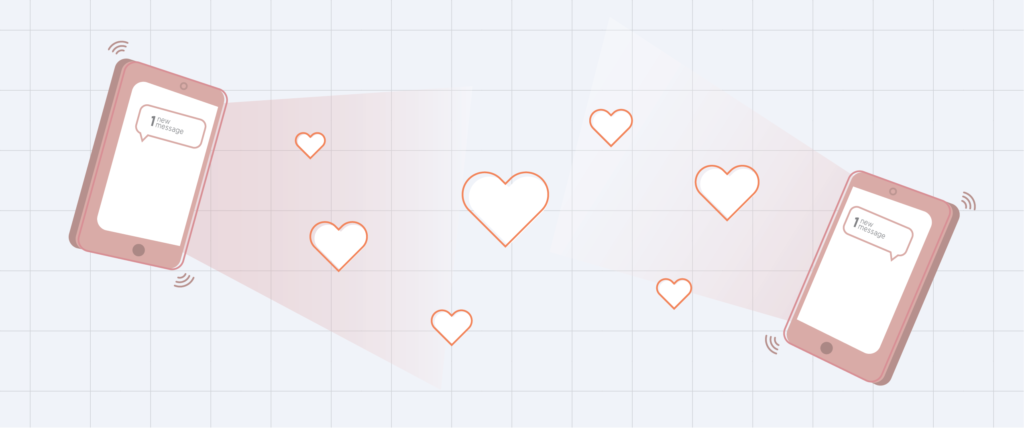
Romance in the Digital Age.
HAS THE INTERNET KILLED ROMANCE?
Since Tom Hanks and Meg Ryan first IM’ed each other in You’ve Got Mail in 1998 – largely normalizing online dating in popular culture – claims that we’ve entered a “dating apocalypse” have arisen time and again. Whether or not that’s true, dating has undeniably changed in the digital age.
Dating-focused tools have largely shaped the modern romance landscape.
Beginning with Match.com’s launch in 1995, a plethora of online dating sites and apps have become available to singles looking to find love. Rather than waiting for a chance encounter that leads to finding the one, modern singles can seek out partners on popular apps like Tinder and Bumble.
In terms of meeting like-minded people, these new tools are definitely convenient. However, they also have downsides. For example, curating an online dating profile and vetting possible partners often results in the online dating burnout phenomenon. In addition, the rise in assortative matching through online dating has led to more marriages between financial “equals,” but there is also a resulting paradoxical effect of increased wealth-inequality gaps across households.
New communication tools have changed romance, too.
Of course, online dating and dating apps aren’t the only things that have changed our concepts of and behaviors related to dating, romance and love. How we communicate overall has drastically changed in the last 20 years, and tools like texting, video calling and social media have also had an impact, in both positive and negative ways.
One of the positives of digital tools is how video calling can make couples in long-distance relationships feel more connected. For example, in 2015, a public radio station in California showcased Jorge and his wife, Magda, who must live separately in the U.S. and Mexico for 10 years because of U.S. immigration law. However, FaceTime helps them close the gap. Magda often strolls around the streets of her small hometown FaceTiming Jorge on her iPad and introducing him to passersby. When the Wi-Fi is working, she even “brings” Jorge to church with her.
Brands are figuring out how to use modern romance to drive loyalty.
Brands have learned that these new digital tools have both advantages and disadvantages in human relationships and are using that information in marketing. Some brands, like Apple, tend to focus on how their technology brings people together. Others, like Dentyne and Durex, have encouraged disconnecting, tapping into people’s desire to turn off their screens and have in-person interactions. Finally, some brands are actually leveraging these new digital platforms themselves to market to customers. For example, on Valentine’s Day in 2015, Domino’s allowed Tinder users to “swipe right” and engage in a pun-filled conversation for a chance to win a free pizza, resulting in 700 Tinder matches and a potential social reach of more than 200,000.
As new digital tools continue to alter human behavior, relationships and how we think about dating, romance and love will also continue to change. To learn more about the effect digital tools are having on modern romance, download the full report.
September 17, 2018 | Research





